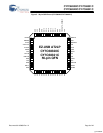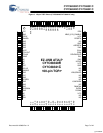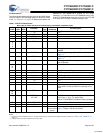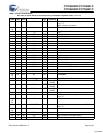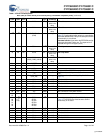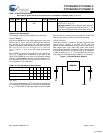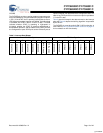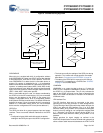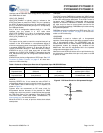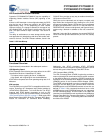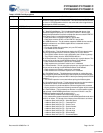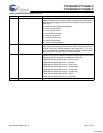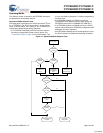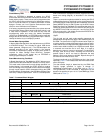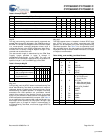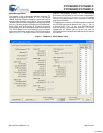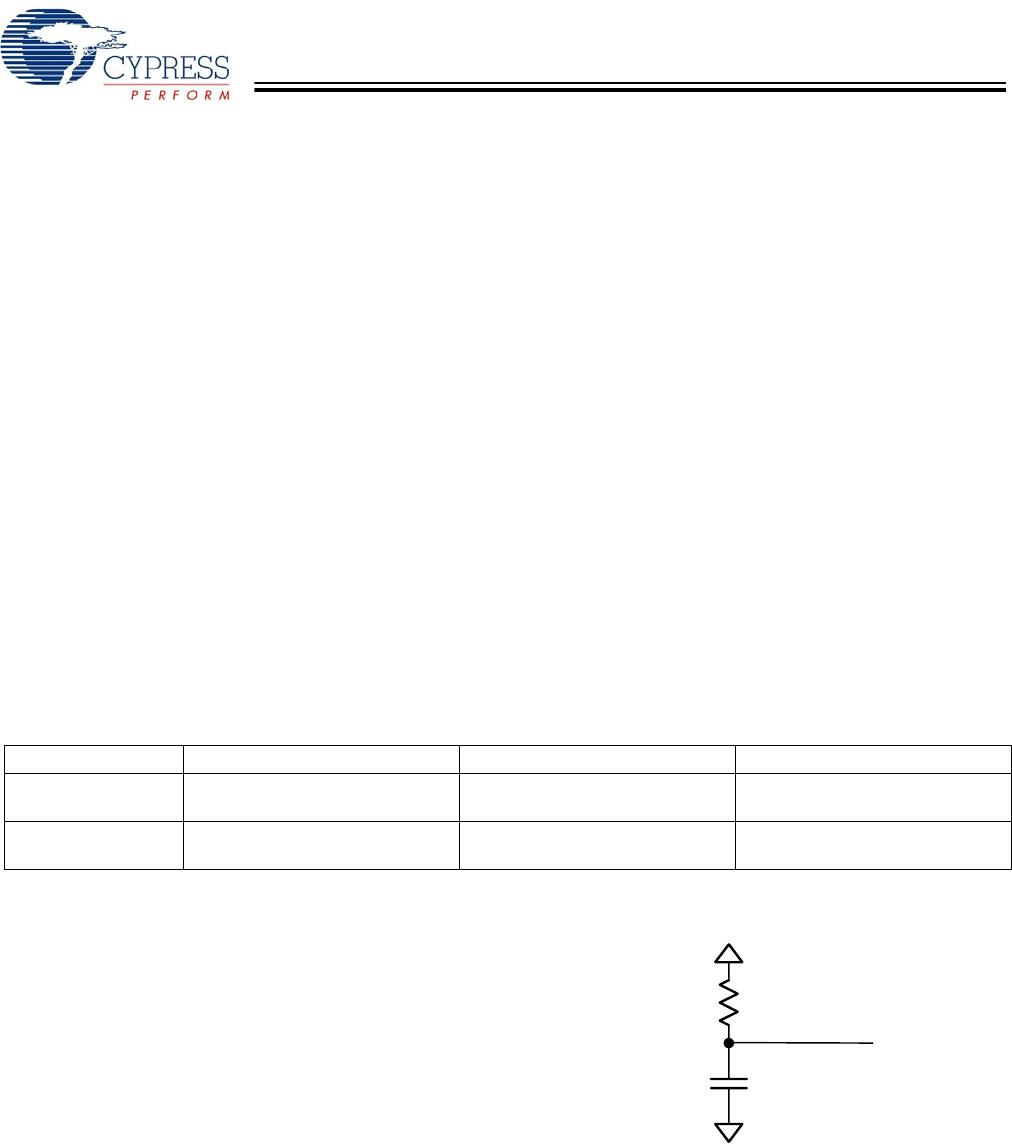
CY7C68300C/CY7C68301C
CY7C68320C/CY7C68321C
Document 001-05809 Rev. *A Page 14 of 42
interface and the attached mass storage device, especially if
Ultra DMA Mode is used.
VBUS_ATA_ENABLE
VBUS_ATA_ENABLE is typically used to indicate to the
AT2LP that power is present on VBUS. This pin is polled by
the AT2LP at startup and then every 20 ms thereafter. If this
pin is ‘0’, the AT2LP releases the pull up on D+ as required by
the USB specification.
Also, if bit 4 of configuration address 0x08 is ‘1’, the ATA
interface pins are placed in a Hi-Z state when
VBUS_ATA_ENABLE is ‘0’. If bit 4 of configuration address
0x08 is ‘0’, the ATA interface pins are still driven when
VBUS_ATA_ENABLE is ‘0’.
ATAPUEN
This output can be used to control the required host pull up
resistors on the ATA interface in a bus-powered design to
minimize unnecessary power consumption when the AT2LP is
in suspend. ATAPUEN is driven to ‘0’ when the ATA bus is
inactive. ATAPUEN is driven to ‘1’ when the ATA bus is active.
ATAPUEN is set to a Hi-Z state along with all other ATA
interface pins if VBUS_ATA_ENABLE is deasserted and the
ATA_EN functionality (bit 4 of configuration address 0x08) is
enabled (0).
ATAPUEN can also be configured as a GPIO input. See “HID
Functions for Button Controls” on page 15 for more infor-
mation on HID functionality.
PWR500#
The AT2LP asserts PWR500# to indicate that VBUS current
may be drawn up to the limit specified by the bMaxPower field
of the USB configuration descriptors. If the AT2LP enters a
low-power state, PWR500# is deasserted. When normal
operation is resumed, PWR500# is restored. The PWR500#
pin must never be used to control power sources for the
AT2LP. In the 56-pin package, PWR500# only functions during
bus-powered operation.
PWR500# can also be configured as a GPIO input. See “HID
Functions for Button Controls” on page 15 for more infor-
mation on HID functionality.
VBUSPWRD
VBUSPWRD is used to indicate self- or bus-powered
operation. Some designs require the ability to operate in either
self- or bus-powered modes. The VBUSPWRD input pin
enables these devices to switch between self-powered and
bus-powered modes by changing the contents of the
bMaxPower field and the self-powered bit in the reported
configuration descriptors (see Table 4).
Note that current USB host drivers do not poll the device for
this information, so the effect of this pin is only seen on a USB
or power on reset.
RESET#
Asserting RESET# for 10 ms resets the entire AT2LP. In
self-powered designs, this pin is normally tied to V
CC
through
a 100k resistor, and to GND through a 0.1 μF capacitor, as
shown in Figure 9.
Cypress does not recommend an RC reset circuit for
bus-powered devices because of the potential for VBUS
voltage drop, which may result in a startup time that exceeds
the USB limit. Refer to the application note titled EZ-USB
FX2™/AT2™/SX2™ Reset and Power Considerations, at
www.cypress.com, for more information.
While the AT2LP is in reset, all pins are held at their default
startup state.
Table 4. Behavior of Descriptor Data that is Dependent Upon VBUSPWRD State
Pin VBUSPWRD = ‘1’ VBUSPWRD = ‘0’ VBUSPWRD N/A (56-pin)
bMaxPower
Reported Value
0xFA
(500 mA)
0x01
(2 mA)
The value from configuration
address 0x34 is used.
bmAttributes bit 6
Reported Value
‘0’
(bus-powered)
‘1’
(self-powered)
‘0’ if bMaxPower > 0x01
‘1’ if bMaxPower ≤ 0x01
Figure 9. R/C Reset Circuit for Self-powered Designs
100KΩ
0.1μF
RESET#
[+] Feedback



